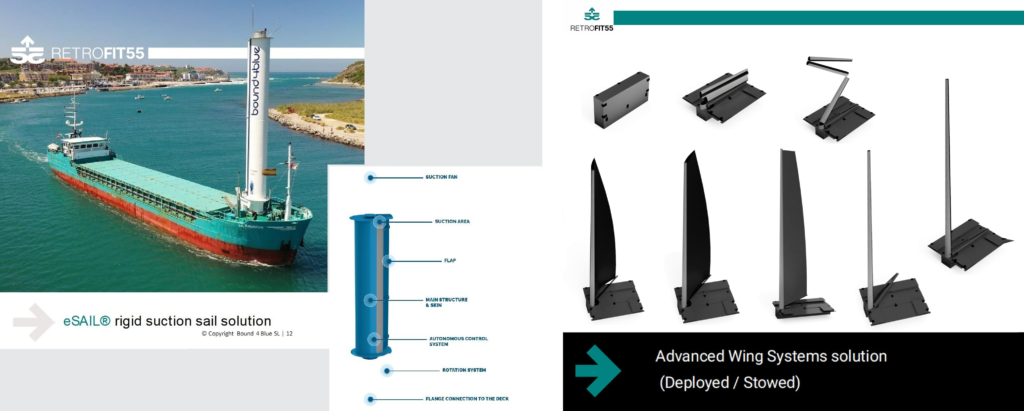Wind Assisted Ship Propulsion (WASP) is a complementary propulsion system that can provide thrust with wind assistance, contributing to reduction in GHG emissions and fuel savings. RetroFIT55 project offers big opportunities to deploy new technologies, like WASP, in the shipping sector. During RetroFIT55 project, where we aim to achieve GHG emissions reduction by combining retrofit solutions, two different Wind Assisted solutions will be further developed:
– one based on rigid suction sails, named eSAIL®, (thanks to our partner bound4blue) which will be based on the concept of active boundary layer control using suction. The basic principles of the eSAIL® are similar to those underlying the generation of lifting power by airplane wings. The sucking of air into the eSAIL® also smooths the flow of wind around its body, with the result that propulsive force can be generated more efficiently.
– And, one based on semi-rigid sails (thanks to our partner Advanced Wing Systems) which will concern the development of a WASP system where it will be possible to stow a large, aerodynamically efficient, wing sail inside a modular deck installation.
In both cases, technology development will concern the possibility to tilt the rigid suction sails, or collapse the semi-rigid ones, when there is no wind and/or when approaching the ports, thus avoiding that the wind interferes with the maneuvering of the vessel.
WASP technology is already mature, however modelling the complexity of a WASP and its effects on the ship dynamics are rather new and challenging topics. The RetroFIT55 project will take into account the following:
– the introduction of the WASP will affect the ship heading and performance, and might require actions on the rudder to keep the route, thus changing the hydrodynamics considerably,
– the system will introduce a leeway angle and heel when in use, causing a change in the wake and a different propeller loading.















